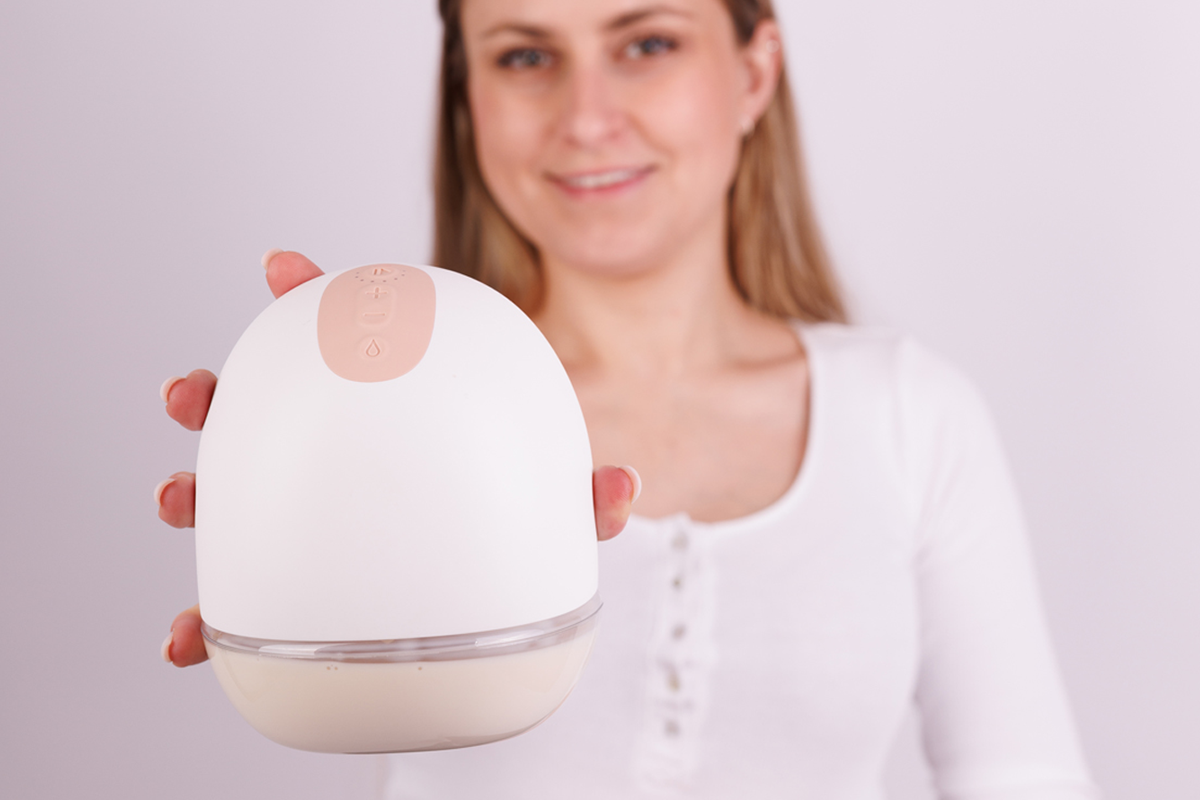Hello fellow mother pumper! Struggling to keep up with your little one's appetite? Power pumping might just be your new secret weapon. This milk-boosting technique can work wonders for your supply, and we're here to spill all the details, but not the milk (every drop counts, am I right). Whether you're a seasoned pro or new to the pumping game, we'll walk you through the perfect power pumping schedule to increase your breast milk supply. Plus, we'll share how you can make the most of your power pump sessions with nifty tools like the Perifit breast pump. Curious about using a wearable breast pump vs regular options? We've got you covered there too. Let's jump right in and unlock your mega milk-making potential.
What is power pumping?
Power pumping is a technique designed to boost breast milk production by mimicking a baby's cluster-feeding patterns. This method involves short, frequent pumping sessions interspersed with brief rest periods, typically over the course of an hour.
How it works?
A common power pumping schedule involves pumping for 20 minutes, resting for 10 minutes, then repeating this cycle twice more. This stimulates the breasts to produce more milk, similar to how a baby might feed more frequently during growth spurts.
Benefits and considerations
Power pumping can be an effective way to increase breast milk supply, especially for those struggling with low milk production. It's important to note that results may take a few days to appear, and consistency is key. Many find it helpful to use a wearable breast pump for convenience during power pumping sessions.
💡 For those looking to optimize their pumping routine, the Perifit Pump offers a power pumping feature, making it easier to incorporate this technique into your breastfeeding journey.
Step-by-step instructions for power pumping sessions
Setting up your power pump session
Begin by finding a comfortable, quiet space where you can relax. Ensure you have a wearable breast pump like the Perifit Pump, which offers a convenient power pumping feature. This hands-free option allows you to multitask during your session, making the process more manageable.
Power pumping with your Perifit breast pump
The Perifit Pump's app features a dedicated program for Power Pumping. You can follow along step by step!
Here’s an overview of the intensive pumping program (Power Pump program) that lasts for 1 hour.
- 20 minutes of pumping (2 minutes of stimulation / 18 minutes of expression)
- 10-minute break
- 10 minutes of pumping (2 minutes of stimulation / 8 minutes of expression)
- 10-minute break
- 10 minutes of pumping (2 minutes of stimulation / 8 minutes of expression)
With the app, the pumping marathon will be easier!
Maximizing your power pump session
To boost efficiency, use a double electric pump and adjust the suction to a comfortable level. Stay hydrated and try to relax during your power pump session - stress can inhibit milk flow. Remember, consistency is key when aiming to increase milk supply through power pumping.
How often and for how long should you power pump?
Power pumping to increase milk supply is a commitment, but with the right schedule, it can be highly effective. Typically, a power pump session lasts about an hour and consists of alternating between pumping and resting periods.
Tips for success with power pumping
Maximize milk expression
Use a high-quality breast pump like the Perifit portable breast pump for optimal results. Its power pumping feature makes the process easier. Stay hydrated and well-nourished to support milk production. Try relaxation techniques during sessions to reduce stress and promote milk flow.
Track your progress
Keep a log of pumping times and milk volumes to identify patterns. To track your progress more easily, consider using a wearable breast pump like the Perifit Pump, which monitors milk output and keeps track of your pumping sessions all within it’s app.
How much milk should you get from power pumping?
Power pumping to increase milk supply can be an effective strategy, but results vary for each individual. Mothers who pump frequently in the early postpartum period (1) tend to produce more milk long-term. For example, by day 4 postpartum, pumping 8-10 times daily may help establish a robust supply.
During a power pumping session, you might express anywhere from a few drops to several ounces. The key is consistency rather than quantity. Power pumping can significantly increase milk volume over time compared to routine pumping. (2)
Pumping at least 6 times per day leads to significantly higher milk output. (3) Reaching 13.6 oz/day by day 7 and 17.3 oz/day by day 14 predicts achieving over 25.2 oz/day by day 42.
If you're freezing or refrigerating your milk after power pumping, be sure to follow safe practices for thawing and reheating breast milk when it's feeding time.
Be patient - it may take time to see substantial increases in your supply.
What type of breast pump can you use for power pumping?
Electric pumps: The power-pumping powerhouse
For effective power pumping, electric breast pumps are the go-to choice. These devices offer consistent suction and adjustable settings, making them ideal for stimulating milk production. Powered pumps, especially double electric models, can save time and increase efficiency during power pumping sessions.
Wearable options for multitasking moms
Wearable breast pumps are gaining popularity for power pumping. These hands-free devices can be tucked into a nursing bra, allowing you to pump while going about your day. The Perifit Pump, for instance, features a power pumping mode and can be controlled via a smartphone app, making it convenient to use a wearable breast pump for your power pump schedule. This allows multitasking moms to fit pumping sessions into their busy routines while still being productive. They can cook, take care of the kids, work, or run errands while the wearable pump does its job.
Manual pumps: A backup option
While not ideal for power pumping, manual pumps can be used in a pinch. However, they require more effort and may not be as effective for stimulating an increased milk supply. For optimal results, stick with electric or wearable options when following a power pump session routine to increase breast milk supply.
Who shouldn't try power pumping?
While power pumping can be an effective way to increase breast milk supply, it's not suitable for everyone. Individuals with certain medical conditions should avoid this technique.
Medical considerations
Those with high blood pressure, anemia, obesity, or hormonal disorders may find power pumping ineffective or potentially harmful. Diabetes and stress can also impact milk production, making power pumping less advisable.
Previous breast surgeries
People who have undergone breast surgeries may not benefit from power pumping, as it might not effectively stimulate milk production in these cases.
Discomfort and pain
If you experience discomfort or pain while using a breast pump, power pumping may not be the best option. Seeking help from a midwife or breastfeeding support professional if you're finding it difficult to express milk.
💡 It's crucial to consult with a lactation consultant or healthcare provider before starting any new pumping regimen, especially if you have underlying health conditions or concerns about your milk supply.
Mothers who are already producing an abundant milk supply
While power pumping is often recommended for increasing low milk supply, it's important to note that those who already have an abundant milk supply may want to avoid this technique. Excessive pumping can lead to an oversupply of breast milk, which can cause discomfort, engorgement, and an increased risk of clogged ducts or mastitis. If you're already producing enough milk to meet your baby's needs, it's generally advisable to stick to your regular pumping routine rather than attempting to boost supply further through power pumping.
So there you have it - everything you need to know about power pumping schedules to increase your milk supply! Whether you choose to power pump with a traditional pump or use a wearable breast pump like the Perifit Pump with its built-in power pumping feature, consistency is key. Remember, everybody responds differently, so be patient with yourself as you navigate this journey. Stick with your power pumping sessions and you should start seeing results within a few days to a week. Above all, trust your body and don't hesitate to reach out for support if you need it. You've got this!
Sources:
- https://pmc.ncbi.nlm.nih.gov/articles/PMC4720864/
- https://pubmed.ncbi.nlm.nih.gov/37794310/
- https://pmc.ncbi.nlm.nih.gov/articles/PMC7192965/




